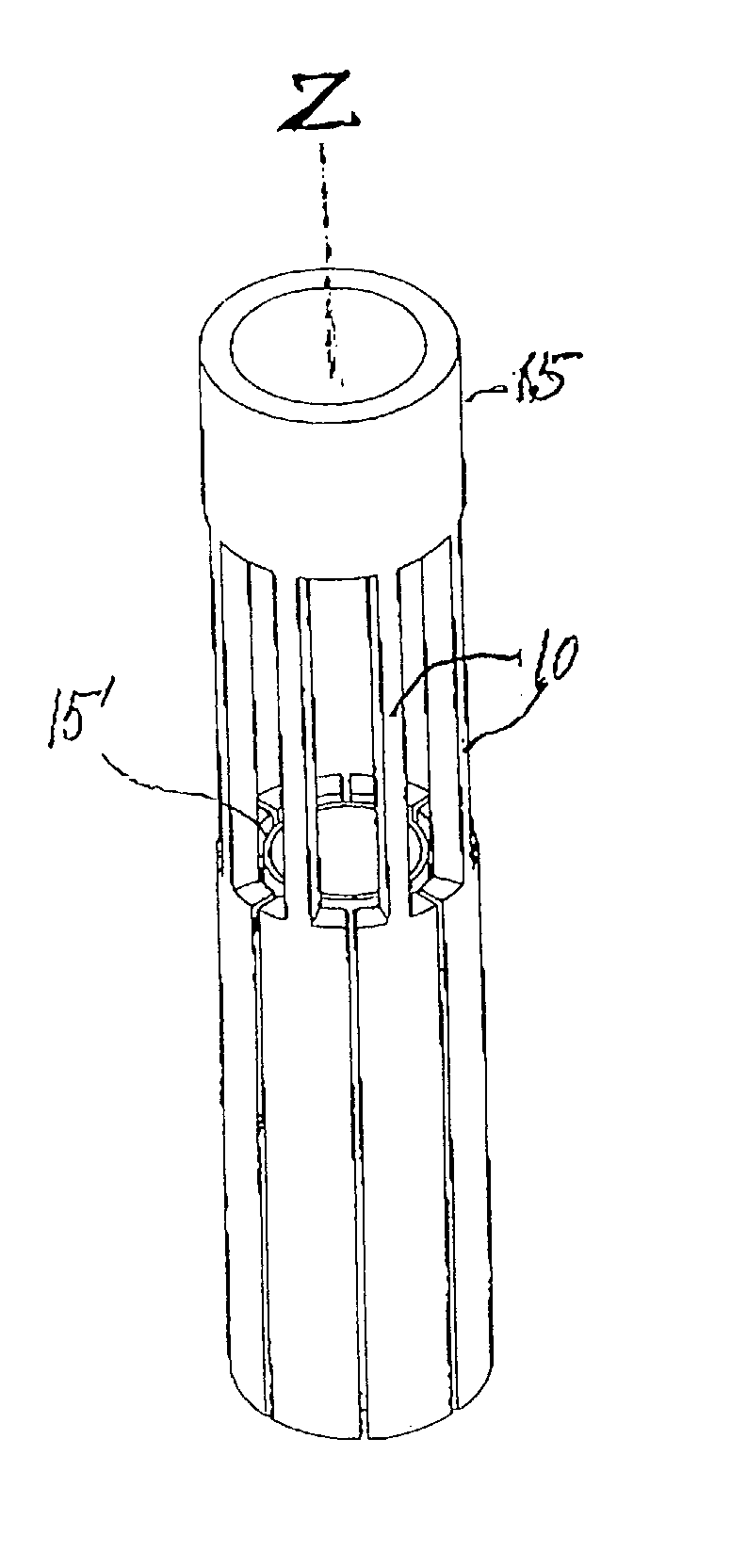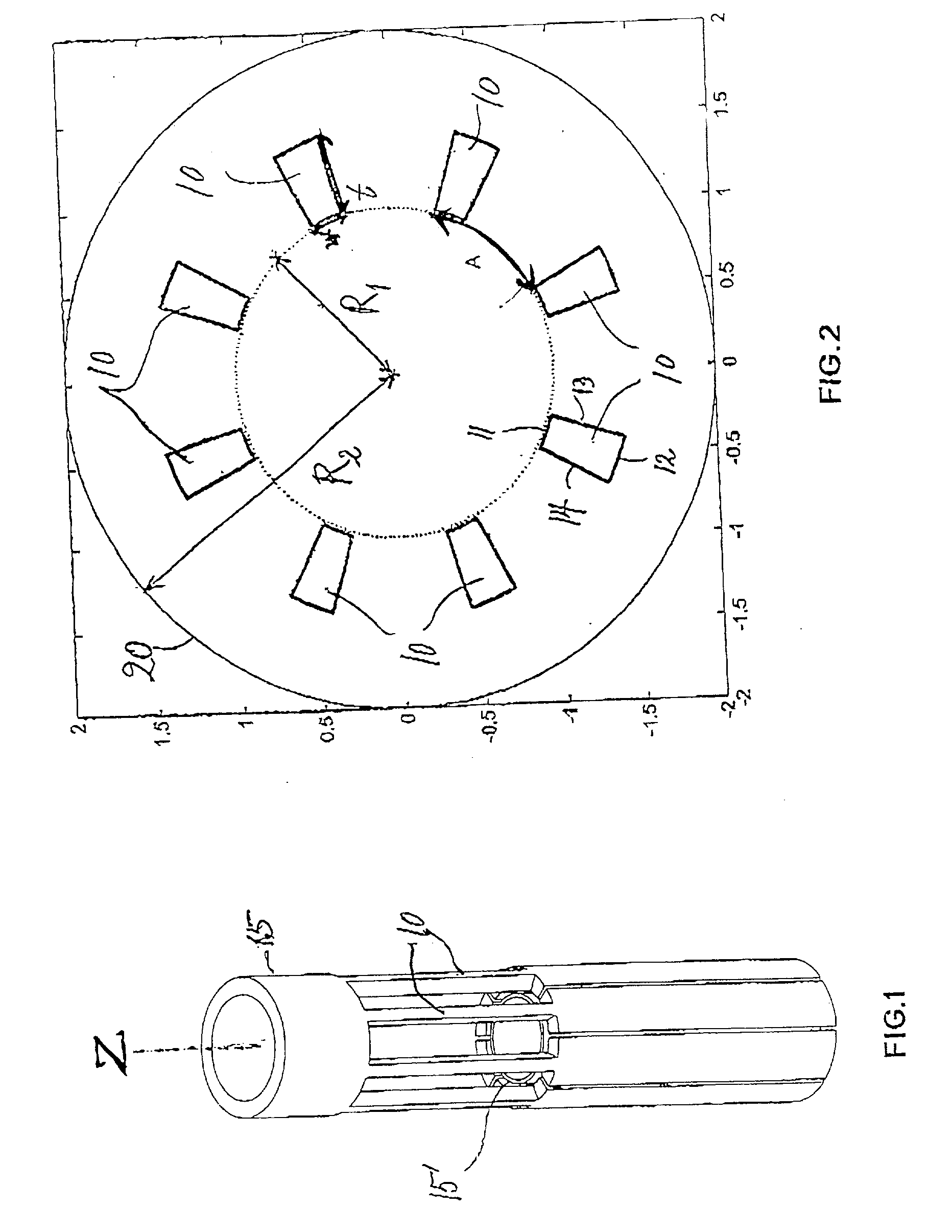Nmr resonators optimized for high q factor
a resonator and q factor technology, applied in the field of nmr resonators, can solve the problems of local distortion of the field, compromise of the filling factor, etc., and achieve the effect of reducing the resistance of the rungs, reducing the resistance, and reducing the resistance of the q factor
- Summary
- Abstract
- Description
- Claims
- Application Information
AI Technical Summary
Benefits of technology
Problems solved by technology
Method used
Image
Examples
Embodiment Construction
[0019] The invention is described next by way of a typical example of birdcage resonator coil geometry of a type having a plurality (N=8) of rungs. FIG. 1 is its external view, showing eight rungs 10 extending axially (in the z-direction) between two conductive rings 15 and 15' separated from each other along the z-direction. The width, thickness and general cross-sectional shape of the rungs 10 in this figure are meant to illustrate a feature of the invention. FIG. 2 is a sectional view of the resonator of FIG. 1 taken along the z-direction, showing the rungs 10 disposed circularly about the rings 15 at equal azimuthal intervals. In practice, the coil of FIG. 1 is disposed inside a radio frequency shield 20 (not shown in FIG. 1) with inner radius indicated by symbol R.sub.2. Each rung 10 has an internally facing surface 11, an externally facing surface 12 and two side surfaces 13 and 14 such that its cross-sectional shape as shown in FIG. 1 is a geometrical figure surrounded by two...
PUM
 Login to View More
Login to View More Abstract
Description
Claims
Application Information
 Login to View More
Login to View More - R&D
- Intellectual Property
- Life Sciences
- Materials
- Tech Scout
- Unparalleled Data Quality
- Higher Quality Content
- 60% Fewer Hallucinations
Browse by: Latest US Patents, China's latest patents, Technical Efficacy Thesaurus, Application Domain, Technology Topic, Popular Technical Reports.
© 2025 PatSnap. All rights reserved.Legal|Privacy policy|Modern Slavery Act Transparency Statement|Sitemap|About US| Contact US: help@patsnap.com



